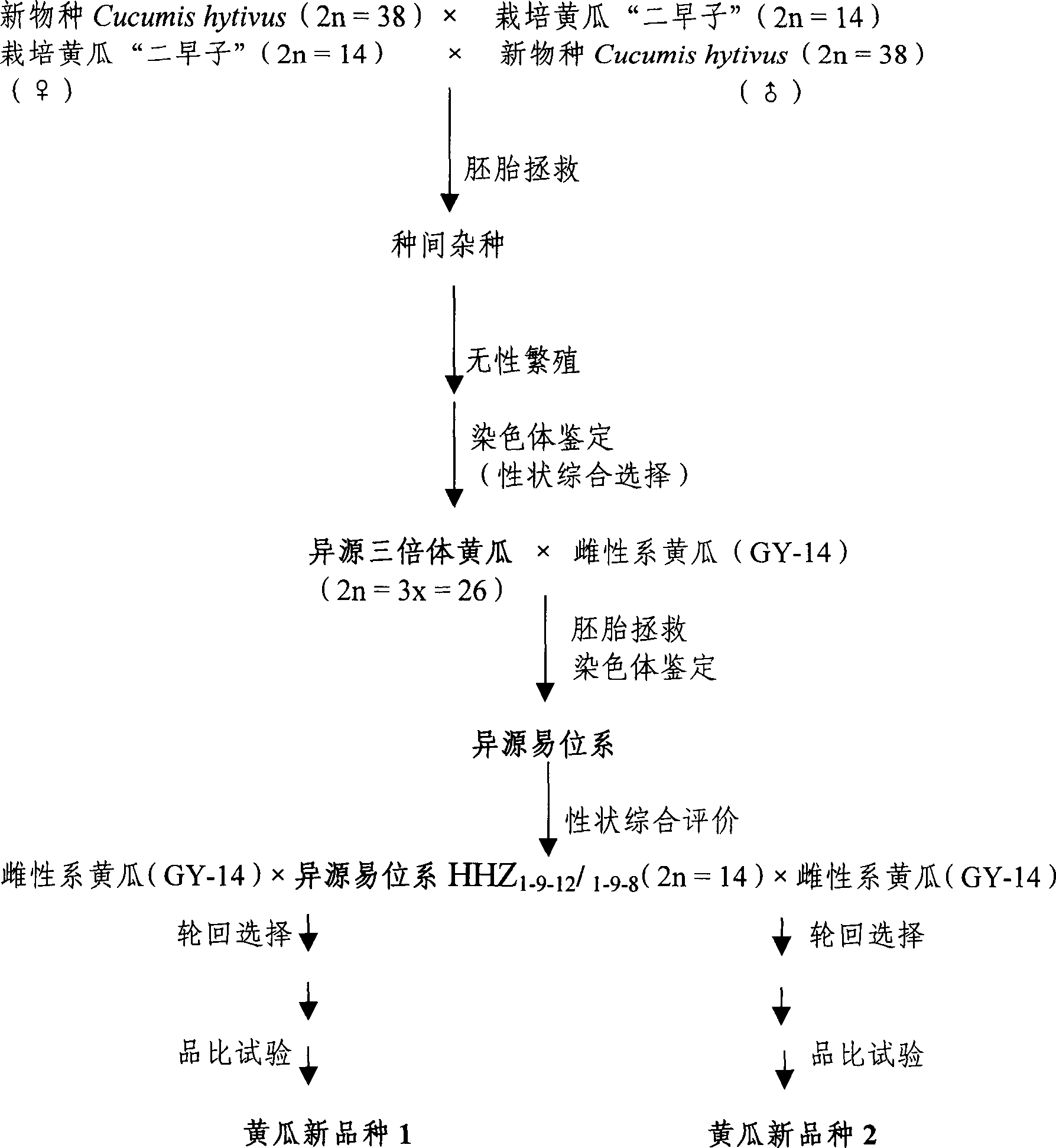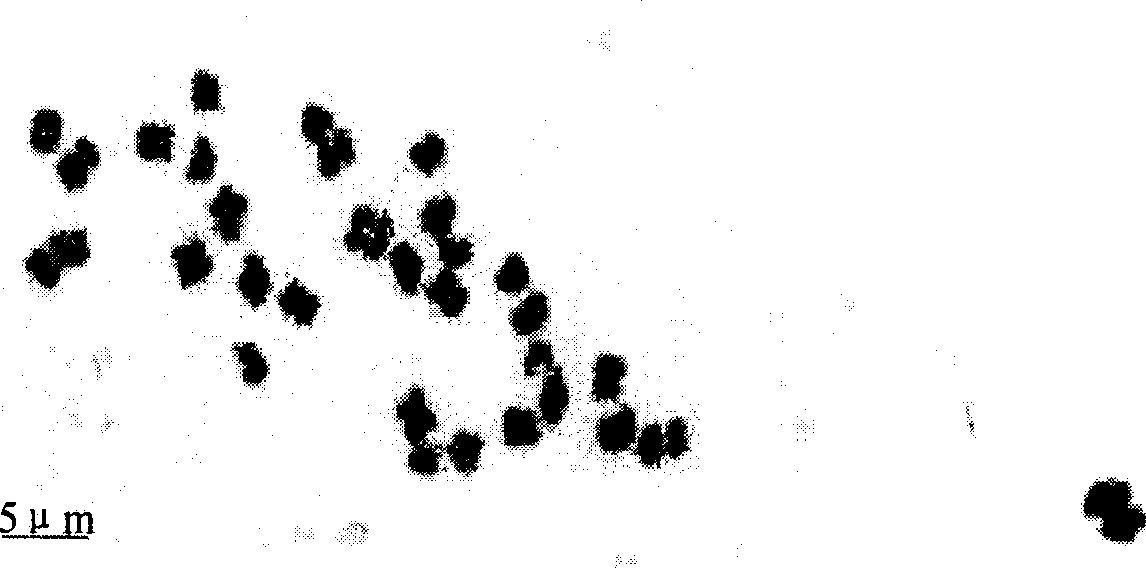Cucumis allostriploid cucumber and used for method of cucumber breeding
A triploid and heterologous technology, applied in the field of chromosome engineering breeding of cucumber, can solve the problem of not cultivating an allotriploid cucumber and the like
- Summary
- Abstract
- Description
- Claims
- Application Information
AI Technical Summary
Problems solved by technology
Method used
Image
Examples
Embodiment 1
[0023] Embodiment 1 The new species of hybrid amphidiploid between the genus Melon ( figure 2 , 3 ) and ordinary cucumber "Erzaozi" (Southern type cucumber) for germination (new seeds are germinated 30 days in advance), or short-day treatment (light 8hr / dark night 16hr) is adopted for new species to synchronize flowering with ordinary cucumbers. The cucumber pollen was pollinated on the style of the interspecies hybrid new species, and embryos of suitable size were taken for culture after 20 days. Place embryos in MS add 0.2 mg L -1 On the medium of 6-BA, subculture after 40 days, then transplant the regenerated plants into greenhouse or field, after 60 days, you can harvest the seedless fruit ( Figure 4 ). The chromosomes of such plants are 2n=26( Figure 5 ), is an allotriploid cucumber. Resistance analysis showed that it was resistant to weak light and root-knot nematode. Subsequently, through in vitro rapid propagation and preservation, the allotriploid cucumber wi...
Embodiment 2
[0026] Example 2 The allotriploid cucumber cultivated above was used to cross the cucumber female line GY-14, and MS was added with 0.2 mg L -1 Regenerated plants were obtained by culturing on 6-BA medium; heterologous translocation lines were screened out by combining tendril counting chromosomes, C-banding analysis, isoenzyme and RAPD analysis; and then through resistance identification and economic Character evaluation, screened out excellent heterologous translocation line HHZ of mesofruit type (fruit type index 5.0) resistant to root-knot nematodes (root-knot index 4.1), resistant to low light (normal growth under 8000Lx light intensity) 1-9-8 .
[0027] Using female line GY-14 and heterologous translocation line HHZ 1-9-8 Carry out 2 to 4 generations of recurrent breeding, and screen out new varieties of mesocarpus (fruit type index 5.0) resistant to root-knot nematodes (root-knot index 4.1) and resistant to low light (normal growth under 8000Lx light intensity) .
...
PUM
 Login to View More
Login to View More Abstract
Description
Claims
Application Information
 Login to View More
Login to View More - R&D
- Intellectual Property
- Life Sciences
- Materials
- Tech Scout
- Unparalleled Data Quality
- Higher Quality Content
- 60% Fewer Hallucinations
Browse by: Latest US Patents, China's latest patents, Technical Efficacy Thesaurus, Application Domain, Technology Topic, Popular Technical Reports.
© 2025 PatSnap. All rights reserved.Legal|Privacy policy|Modern Slavery Act Transparency Statement|Sitemap|About US| Contact US: help@patsnap.com



